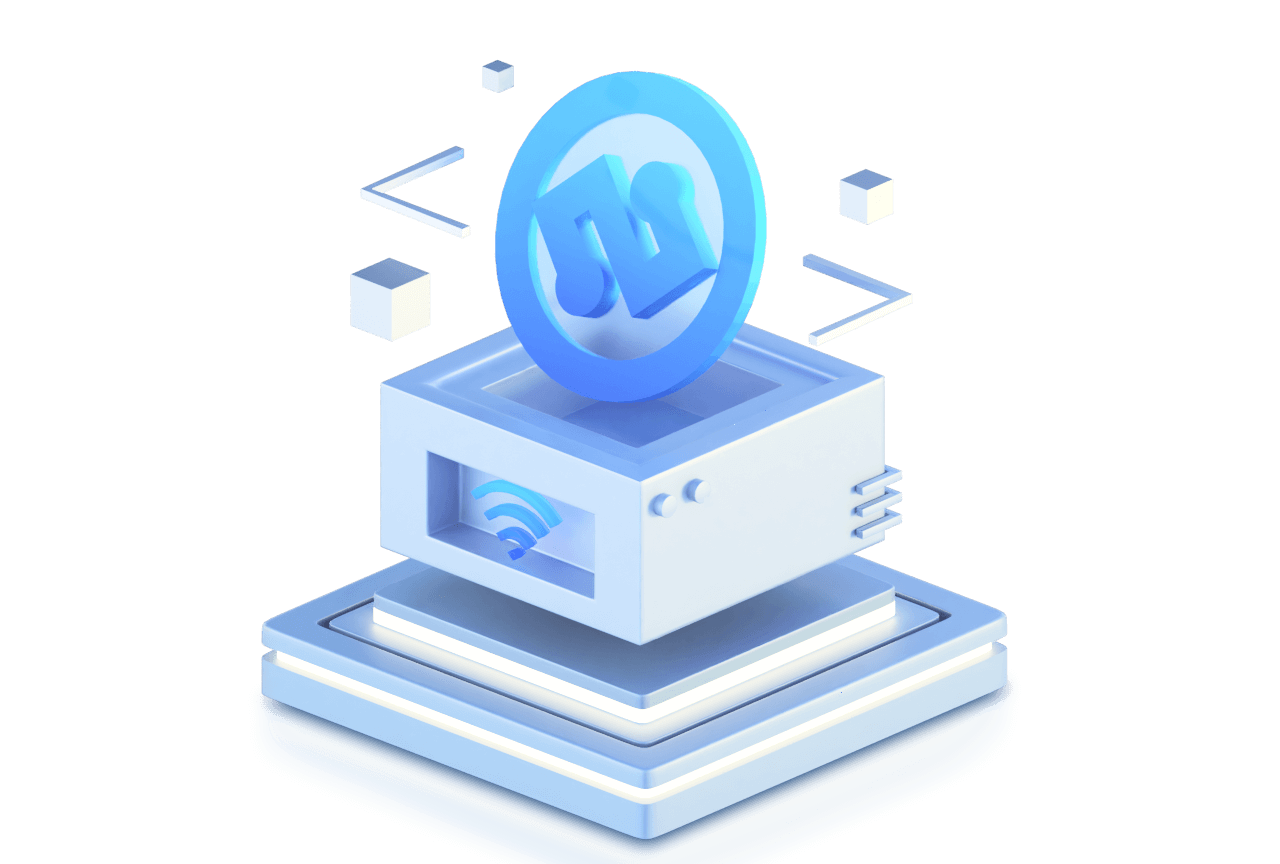Tencent Cloud IoT Hub provides a secure, stable and efficient connection platform that helps developers quickly achieve reliable and high-concurrency data communications among devices, user applications and cloud services at low costs. In other words, IoT Hub can realize cross-device interaction, device data reporting and configuration distribution. In addition, by opening up the link between device data and Tencent Cloud products using the rule engine, it allows for the quick and easy storage, real-time computation and intelligent processing and analytics of massive amounts of data. Using IoT Hub, you can create connections among devices, data, applications and cloud services at low costs to quickly build an IoT application platform.
Overview
Benefits

Fast and Simple Access
Using the console, SDK or Cloud API, you can quickly enable device access and data communications without having to worry about the details of the underlying communications protocols.

Secure and Reliable Transfer
A secure network transfer protocol is introduced for device access and data transfer, requiring that every single device be authenticated with device certificate verification to effectively protect against unauthorized access, data theft and tampering.

Stable Full-time Security Guarantee
Leveraging Tencent's years of experience in numerous services, IoT Hub's backend is capable of automatic disaster recovery and load balancing, providing you with 24/7 OPS and monitoring services.

Flexible Scaling System
By opening up the link between device data and Tencent Cloud products using the rule engine, IoT Hub allows for the quick and easy storage, real-time computation and intelligent processing and analytics of massive amounts of data.

Low Cost
IoT Hub is billed based on the number of messages sent and has low initial costs. Its one-stop service architecture saves R&D time and labor costs.

Visual Data Management
IoT Hub can access big data visualization service Tencent Cloud RayData. This feature enables you to visualize, contextualize and interact with high volumes of data reported by the IoT devices by utilizing real-time data rendering technology, facilitating the personalized management and usage of data.
Features
Device Access
Device Management
Device Communication
Device Shadow
Rule Engine
Data Processing
Collaborative Management
Device Access
SDK Access
IoT Hub supports SDKs for operating systems such as Linux and Android.
RTOS Portability
IoT Hub's SDK supports cross-platform porting with the hardware abstraction layer detached from the framework, making access to IoT Hub from different platforms fast and easy.
Transfer Protocols
IoT Hub supports the MQTT, CoAP, HTTP and WebSocket protocols so that appropriate protocol channels can be selected for different device resources and application scenarios.
Security Protocols
IoT Hub performs two-way authentication and encrypted data transfer between the client and server based on security protocols such as TLS and DTLS to prevent risks like unauthorized access, data theft and tampering. Either the symmetric or asymmetric encryption mode can be appropriately selected for different security risks that device resources and application scenarios face.
Device Firmware Upgrade
IoT Hub supports OTA firmware upgrades, making it possible to perform OTA upgrades on IoT servers in case of security risks or functional vulnerabilities with device firmware.
NB-IoT Access
Compatible with the NB-IoT platforms of China Telecom and China Mobile, IoT Hub supports access to devices under NB-IoT and cross-platform data intercommunications.
Device Management
Lifecycle Management
Devices can be registered, added, deleted or terminated within the console. This can also be done using the SDK toolkit for improved efficiency.
Device Status
The device status can be monitored throughout the entire process, with instant notifications for any status changes. IoT Hub supports data visualization and historical data review for the key metrics of device operations such as the number of online products, uplink and downlink messages, messages with exceptions and rule engine hits.
Management Tools
In terms of the device management capabilities in IoT scenarios, IoT Hub provides convenient SDK tools for quickly creating, querying and operating devices in batches in the backend to improve efficiency. Currently, it supports the Python, PHP and JAVA toolkits.
Device Communication
The publishing and subscription capabilities of message communications between devices are strictly and securely controlled. For the MQTT protocol, message features such as QoS=0 and QoS=1 are supported. Offline storage is also supported. Fast message communications between devices are enabled based on the rule engine.
Device Shadow
Essentially a copy of device data in JSON format cached on the server, a device shadow is mainly used to save:
- The configuration of the device.
- The current status of the device.
As an intermediary, the device shadow can effectively achieve bilateral data synchronization between the device and the user application:
- For device configuration, the user application does not need to directly modify the device. Instead, it can modify the device shadow on the server, which will sync modifications to the device. If the device is offline at the time of modification, it will be synced with the latest configuration from the shadow once it comes back online.
- For device status, the device reports the status to the device shadow, and when users initiate queries, they can simply query the shadow. This can effectively reduce the network interactions between the device and the server, especially for low-power devices.
Rule Engine
Syntax Rules
IoT Hub supports SQL-like syntax and basic semantic operations. The contents of device messages can be parsed, filtered, extracted and re-integrated through simple syntax, with the results forwarded to Tencent Cloud's backend services such as storage, function computing and Tencent Big Data Suite (TBDS) for seamless access.
Device-to-device Interconnection
In order to isolate device data and ensure secure communications, the device can only publish and subscribe to messages in its own topics. Interconnection can be achieved through the rule engine-based repub function.
Importing Device Messages into Message Queue
As the only accessor to the device, IoT Hub can easily configure and write device messages and status change behaviors to Tencent Cloud Message Queue services such as CMQ and CKafka. From there, a third-party service can obtain and consume the data through the Message Queue SDK interface, enabling async message communications between the device and the third-party service. Device messages can be analyzed and studied with the aid of TBDS.
Importing Device Messages into Cloud Database
Through the convenient configuration of the rule engine, IoT Hub can quickly write device messages to various Tencent Cloud storage services such as TencentDB for MySQL, TencentDB for MongoDB and TencentDB for CTSDB, eliminating the logic development work for intermediate data acquisition and transfer and in turn reducing costs. Device messages can be analyzed and learned on with the aid of TBDS.
Device-cloud Interconnection
Tencent Cloud offers corresponding products (such as TBDS, RayData, etc.) for scenarios where users require the further processing of device data (big data analytics). The direct connection between IoT Hub and these cloud products will be made available soon.
Forwarding Device Messages to Third-party Services
The rule engine supports configuring the direct forwarding of device messages to third-party services, quickly making available the communications between the device and the accessor's backend services.
Data Processing
Real-time Computation
In the IoT industry, massive amounts of data must be reported in real time, and core businesses have high requirements for the timeliness of data monitoring, making stream computing and real-time computing significant for such application scenarios. The rule engine forwards device data in real time to CKafka, which is connected to Storm/SparkStreaming stream computing, helping enable the real-time computation of device data.
Intelligent Processing
IoT Hub is capable of connecting to TBDS. Leveraging TBDS's powerful data discovery, analysis and mining capabilities, data from billions of IoT devices can be quickly and intelligently processed to tap into the value of data, improve efficiency and seize market opportunities.
Visualization
IoT Hub is capable of accessing big data visualization service Tencent Cloud RayData. This feature enables you to visualize, contextualize and interact with high volumes of data reported by the devices with the aid of real-time data rendering technology, facilitating personalized data management and usage.
Collaborative Management
Access Management and Resource Collaboration
IoT Hub supports the secure access, use and management of cloud account resources through CAM. The isolation and collaboration of IoT cloud resources are realized through the identity and policy management of sub-accounts and collaborators.
Features
Device Access
SDK Access
IoT Hub supports SDKs for operating systems such as Linux and Android.
RTOS Portability
IoT Hub's SDK supports cross-platform porting with the hardware abstraction layer detached from the framework, making access to IoT Hub from different platforms fast and easy.
Transfer Protocols
IoT Hub supports the MQTT, CoAP, HTTP and WebSocket protocols so that appropriate protocol channels can be selected for different device resources and application scenarios.
Security Protocols
IoT Hub performs two-way authentication and encrypted data transfer between the client and server based on security protocols such as TLS and DTLS to prevent risks like unauthorized access, data theft and tampering. Either the symmetric or asymmetric encryption mode can be appropriately selected for different security risks that device resources and application scenarios face.
Device Firmware Upgrade
IoT Hub supports OTA firmware upgrades, making it possible to perform OTA upgrades on IoT servers in case of security risks or functional vulnerabilities with device firmware.
NB-IoT Access
Compatible with the NB-IoT platforms of China Telecom and China Mobile, IoT Hub supports access to devices under NB-IoT and cross-platform data intercommunications.
Device Management
Lifecycle Management
Devices can be registered, added, deleted or terminated within the console. This can also be done using the SDK toolkit for improved efficiency.
Device Status
The device status can be monitored throughout the entire process, with instant notifications for any status changes. IoT Hub supports data visualization and historical data review for the key metrics of device operations such as the number of online products, uplink and downlink messages, messages with exceptions and rule engine hits.
Management Tools
In terms of the device management capabilities in IoT scenarios, IoT Hub provides convenient SDK tools for quickly creating, querying and operating devices in batches in the backend to improve efficiency. Currently, it supports the Python, PHP and JAVA toolkits.
Device Communication
The publishing and subscription capabilities of message communications between devices are strictly and securely controlled. For the MQTT protocol, message features such as QoS=0 and QoS=1 are supported. Offline storage is also supported. Fast message communications between devices are enabled based on the rule engine.
Device Shadow
Essentially a copy of device data in JSON format cached on the server, a device shadow is mainly used to save:
- The configuration of the device.
- The current status of the device.
As an intermediary, the device shadow can effectively achieve bilateral data synchronization between the device and the user application:
- For device configuration, the user application does not need to directly modify the device. Instead, it can modify the device shadow on the server, which will sync modifications to the device. If the device is offline at the time of modification, it will be synced with the latest configuration from the shadow once it comes back online.
- For device status, the device reports the status to the device shadow, and when users initiate queries, they can simply query the shadow. This can effectively reduce the network interactions between the device and the server, especially for low-power devices.
Rule Engine
Syntax Rules
IoT Hub supports SQL-like syntax and basic semantic operations. The contents of device messages can be parsed, filtered, extracted and re-integrated through simple syntax, with the results forwarded to Tencent Cloud's backend services such as storage, function computing and Tencent Big Data Suite (TBDS) for seamless access.
Device-to-device Interconnection
In order to isolate device data and ensure secure communications, the device can only publish and subscribe to messages in its own topics. Interconnection can be achieved through the rule engine-based repub function.
Importing Device Messages into Message Queue
As the only accessor to the device, IoT Hub can easily configure and write device messages and status change behaviors to Tencent Cloud Message Queue services such as CMQ and CKafka. From there, a third-party service can obtain and consume the data through the Message Queue SDK interface, enabling async message communications between the device and the third-party service. Device messages can be analyzed and studied with the aid of TBDS.
Importing Device Messages into Cloud Database
Through the convenient configuration of the rule engine, IoT Hub can quickly write device messages to various Tencent Cloud storage services such as TencentDB for MySQL, TencentDB for MongoDB and TencentDB for CTSDB, eliminating the logic development work for intermediate data acquisition and transfer and in turn reducing costs. Device messages can be analyzed and learned on with the aid of TBDS.
Device-cloud Interconnection
Tencent Cloud offers corresponding products (such as TBDS, RayData, etc.) for scenarios where users require the further processing of device data (big data analytics). The direct connection between IoT Hub and these cloud products will be made available soon.
Forwarding Device Messages to Third-party Services
The rule engine supports configuring the direct forwarding of device messages to third-party services, quickly making available the communications between the device and the accessor's backend services.
Data Processing
Real-time Computation
In the IoT industry, massive amounts of data must be reported in real time, and core businesses have high requirements for the timeliness of data monitoring, making stream computing and real-time computing significant for such application scenarios. The rule engine forwards device data in real time to CKafka, which is connected to Storm/SparkStreaming stream computing, helping enable the real-time computation of device data.
Intelligent Processing
IoT Hub is capable of connecting to TBDS. Leveraging TBDS's powerful data discovery, analysis and mining capabilities, data from billions of IoT devices can be quickly and intelligently processed to tap into the value of data, improve efficiency and seize market opportunities.
Visualization
IoT Hub is capable of accessing big data visualization service Tencent Cloud RayData. This feature enables you to visualize, contextualize and interact with high volumes of data reported by the devices with the aid of real-time data rendering technology, facilitating personalized data management and usage.
Collaborative Management
Access Management and Resource Collaboration
IoT Hub supports the secure access, use and management of cloud account resources through CAM. The isolation and collaboration of IoT cloud resources are realized through the identity and policy management of sub-accounts and collaborators.
Scenarios
Internet of Vehicles
Smart Energy
Smart Home
Industrial Equipment
Smart Transportation/City
Smart Tourism
Data about the driver's driving habits is collected and analyzed, and real-time conditions of vehicle parts such as tires, brake pads and air conditioners as well as traffic conditions are also monitored, providing traffic advice in a timely manner. Furthermore, such data can be combined with the data in insurance company databases to select the most appropriate insurance plan.
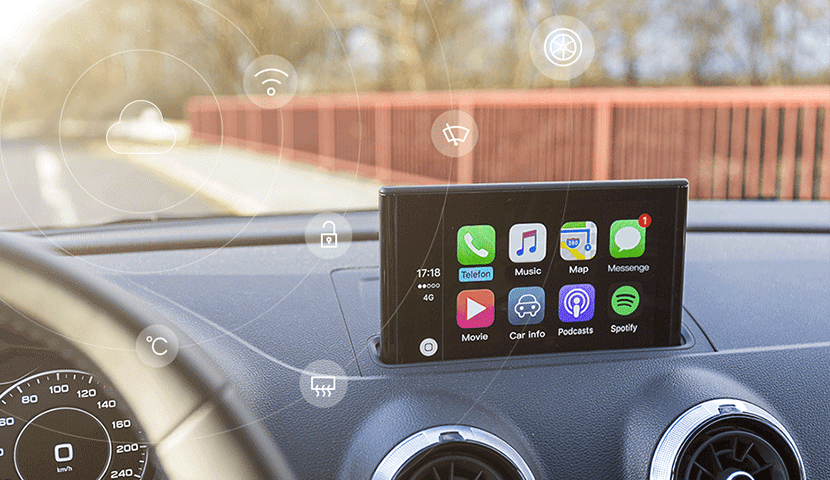
Fast and cost-effective platform access service is provided for energy equipment, helping energy companies monitor their equipment status in real time, perform professional big data processing, schedule energy efficiency intelligently and help fuel energy industry innovations.

A smart home system links people and home appliances. It detects whether users are home through door sensors and turns on/off appliances such as air conditioners, lights, TVs and speakers by taking into account the current temperature and time. Cross-device message and rule engines can be created using the IoT Hub SDK to realize linkage between devices.
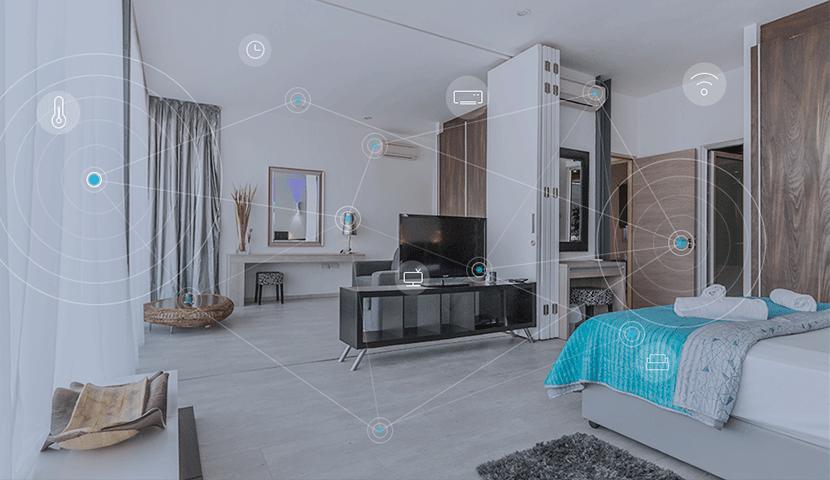
IoT Hub enables enterprises to easily and quickly build IoT networks to achieve the automatic control and real-time monitoring of equipment, helping improve overall equipment effectiveness (OEE) and health management levels and creating innovative value-added services.
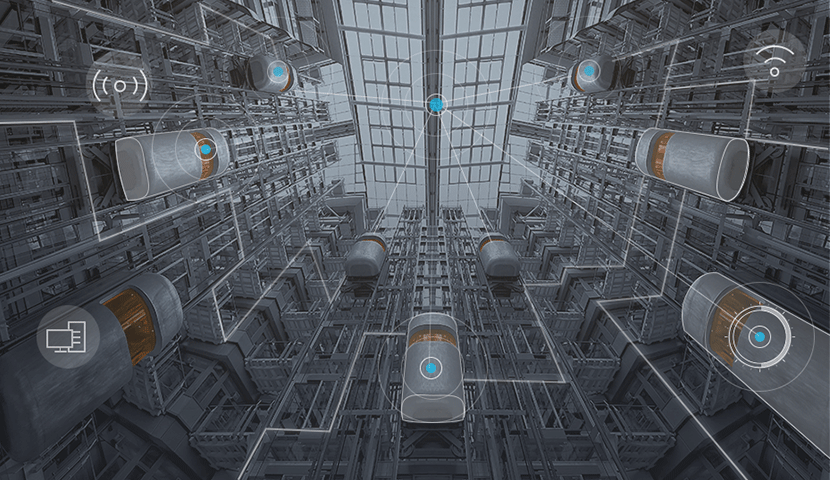
Numerous sensors and controllers in the smart city are connected to IoT Hub. Tencent Cloud's big data services and intelligent algorithms can be used to monitor and predict group behaviors to improve urban efficiency and decrease labor costs.
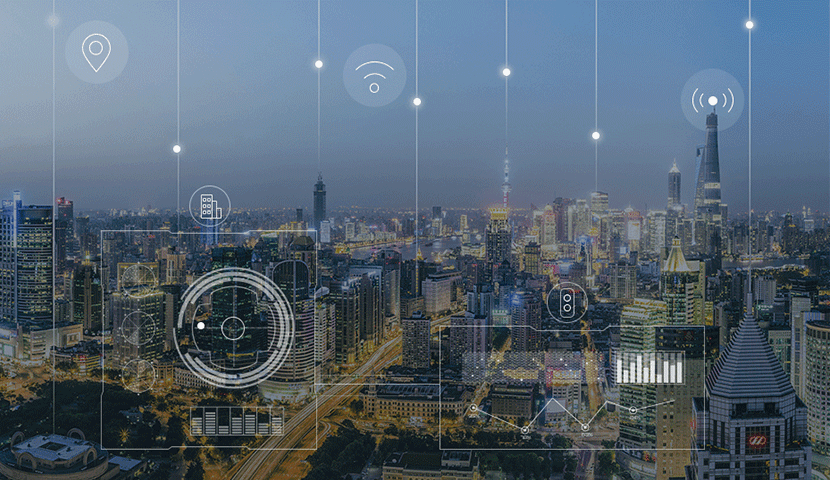
Utilizing IoT sensing technology and the strengths of WeChat Mini Programs, IoT Hub can construct a real-time sensing platform for tourism facilities such as restrooms, auto gates and smart toll booths to provide more convenient and intelligent services for smart tourism.

